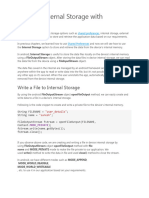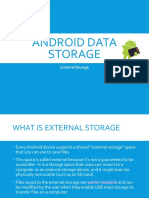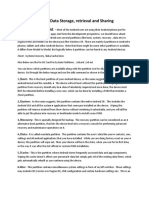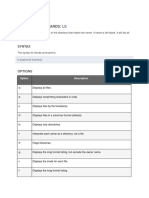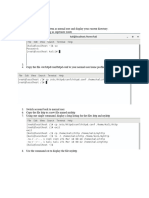0% found this document useful (0 votes)
6 views14 pagesTopic04 WorkingWithFiles
The document provides an overview of file storage options on Android devices, distinguishing between internal and external storage. Internal storage is private to the application, while external storage allows for file sharing and user access. It also discusses how to read and write files in both storage types, including methods to check the availability of external storage.
Uploaded by
Kim NgânCopyright
© © All Rights Reserved
We take content rights seriously. If you suspect this is your content, claim it here.
Available Formats
Download as PDF, TXT or read online on Scribd
0% found this document useful (0 votes)
6 views14 pagesTopic04 WorkingWithFiles
The document provides an overview of file storage options on Android devices, distinguishing between internal and external storage. Internal storage is private to the application, while external storage allows for file sharing and user access. It also discusses how to read and write files in both storage types, including methods to check the availability of external storage.
Uploaded by
Kim NgânCopyright
© © All Rights Reserved
We take content rights seriously. If you suspect this is your content, claim it here.
Available Formats
Download as PDF, TXT or read online on Scribd
/ 14




